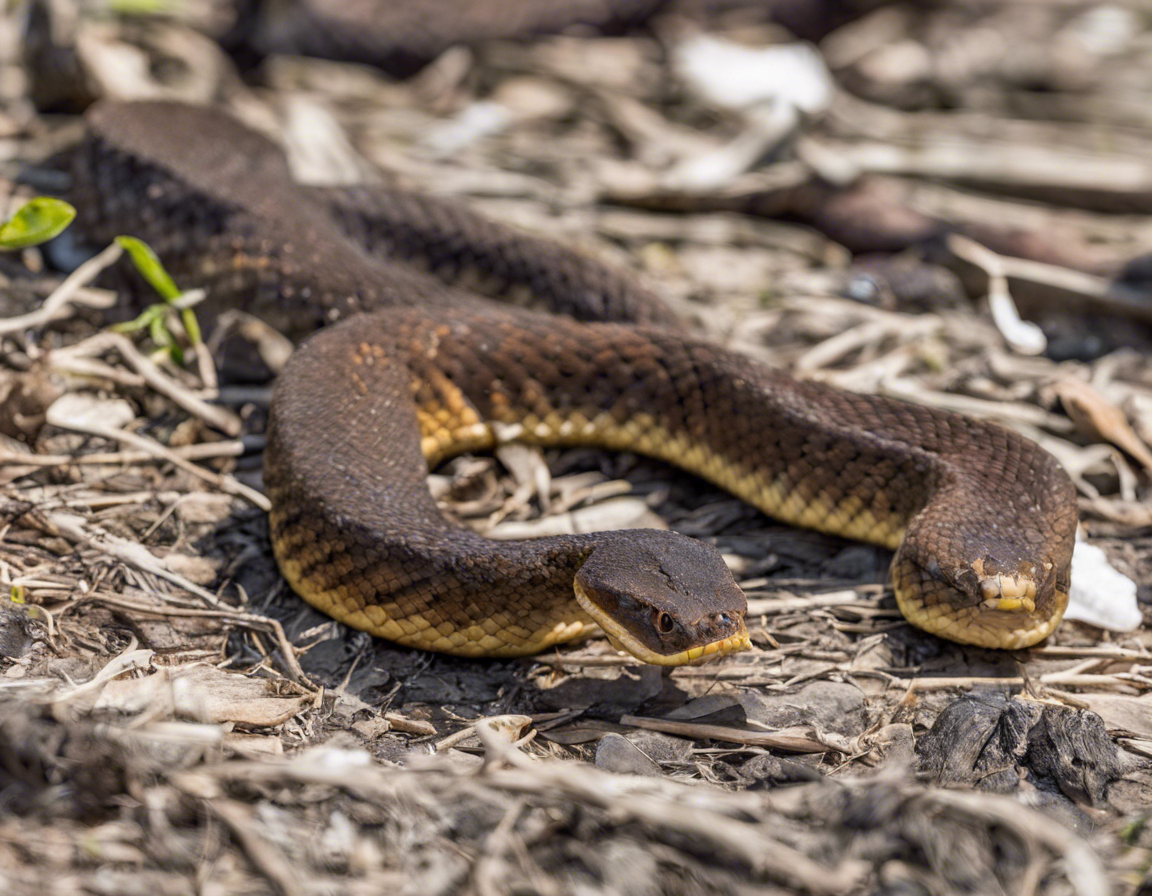Introduction:
Cottonmouth is one of the most common types of venomous snakes found in the southeastern United States. Also known as the water moccasin, these snakes can be found in or near water sources such as swamps, streams, and marshes. Despite their intimidating appearance, cottonmouths play a vital role in the ecosystem by controlling rodent populations and are generally shy and non-aggressive unless provoked.
Identification:
Cottonmouths are known for their distinctive cotton-white mouths, which they display as a warning when they feel threatened. Their coloring can vary from dark brown to almost black, with a rough texture along their bodies. Juvenile cottonmouths often have bright yellow or green tails, which they use to lure prey.
Habitat:
Cottonmouths are semi-aquatic creatures, preferring wetland habitats such as marshes, swamps, and slow-moving streams. They are excellent swimmers and can be found both in and out of the water. During the colder months, cottonmouths may hibernate in burrows or underwater dens.
Diet:
As opportunistic feeders, cottonmouths primarily prey on small mammals, amphibians, birds, and even other snakes. They are known to strike quickly and inject venom into their prey, which helps them to digest their food more easily.
Behavior:
Contrary to popular belief, cottonmouths are not inherently aggressive towards humans and will usually try to flee rather than attack when encountered. However, if they feel threatened or cornered, they may strike as a form of defense. It’s crucial to give these snakes a wide berth and avoid provoking them to prevent any potential conflicts.
Bites and Venom:
Cottonmouths possess potent venom that is hemotoxic, meaning it affects blood cells and vessels. If bitten, symptoms can include severe pain, swelling, bruising, and potentially death if left untreated. Prompt medical attention is essential in the event of a cottonmouth bite.
Prevention:
To reduce the risk of encountering a cottonmouth:
- Be cautious when walking near bodies of water or in areas with thick vegetation.
- Wear appropriate footwear and avoid reaching into areas where snakes may be hiding.
- Be mindful of your surroundings, especially in snake-prone regions.
First Aid:
If bitten by a cottonmouth:
- Stay calm and avoid panicking.
- Keep the affected limb immobilized and at or slightly below heart level.
- Seek medical help immediately.
FAQs:
-
Are cottonmouths aggressive towards humans?
Cottonmouths are generally not aggressive towards humans and will typically only bite if provoked or threatened. -
How venomous are cottonmouths compared to other snakes?
Cottonmouths have potent venom, but their bites are rarely fatal to humans. However, prompt medical attention is essential. -
Can cottonmouths swim?
Yes, cottonmouths are proficient swimmers and can often be found in or near water sources. -
What should I do if I encounter a cottonmouth?
Give the snake space and slowly back away. Do not attempt to handle or provoke it. -
Do cottonmouths have any predators?
While cottonmouths have few natural predators due to their venomous nature, they may fall prey to larger mammals or birds of prey.
In conclusion, understanding the habits and behavior of cottonmouth snakes is crucial for coexisting safely with these reptiles in their natural habitats. By taking precautions, showing respect towards these creatures, and knowing how to react in the event of an encounter, we can minimize the risks associated with sharing our environment with cottonmouths.

